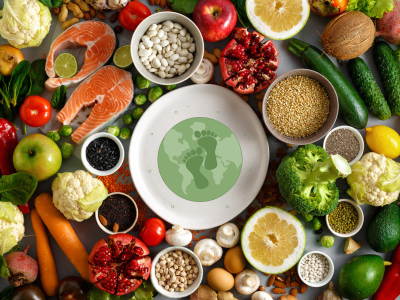As we navigate the challenges of climate change and environmental sustainability, it’s crucial to examine the various contributors to greenhouse gas emissions. While industries and transportation have long been in the spotlight, a significant player often overlooked is our very own plate of food. In India, a country known for its diverse culinary landscape, understanding the carbon impact of food is paramount to crafting a more sustainable future.
Carbon Emissions Across the Food Lifecycle
Recent studies analyzing the carbon emissions associated with 24 common Indian food items shed light on the complex relationship between diet and environmental impact. The findings revealed that carbon emissions occur at multiple stages of a food product’s lifecycle. Notably, animal-based products like meat and milk, along with rice cultivation, were identified as leading contributors to methane (CH4) emissions. Conversely, crops used for food production were responsible for nitrous oxide (N2O) emissions.
The carbon emissions themselves encompass a range of activities, including farm operations, production of inputs like fertilizers, transportation, processing, and food preparation. These activities cumulatively release carbon dioxide (CO2) into the atmosphere.
Comparing Carbon Emissions: A Glimpse into Food’s Footprint
The analysis extended to comparing the carbon emissions associated with different food items. Surprisingly, the carbon footprint during the lifecycle of cooked rice was found to be 2.8 times greater than that of chapatti, a staple made from wheat flour. However, real revelations emerged when comparing animal-based products with plant-based options.
In India’s context, mutton took center stage with startling numbers. Mutton was found to emit 11.9 times more greenhouse gases than milk, 12.1 times more than fish, 12.9 times more than rice, and a staggering 36.5 times more than chapatti. These figures underscore the substantial impact of meat consumption on carbon emissions.
Local Sourcing and Emission Allocation
Considering India’s penchant for locally produced fresh foods, it’s intriguing to note that a significant chunk of carbon emissions—87%—stem from food production. The subsequent contributors are food preparation (10%), processing (2%), and transportation (1%). This indicates that supporting local agriculture and reducing wastage through conscious consumption habits could play a pivotal role in emission reduction.
Diet Diversity and Emission Mitigation
Dietary choices carry immense potential for mitigating carbon emissions. The study outlined how a balanced vegetarian diet could have a substantially lower carbon footprint. For instance, an adult Indian man consuming a balanced vegetarian diet emitted approximately 723.7 grams of CO2-equivalent greenhouse gases per day. In contrast, a non-vegetarian meal with mutton emitted 1.8 times more than a vegetarian meal, 1.5 times more than a non-vegetarian meal with chicken or eggs, and 1.4 times more than a Lacto-vegetarian meal.
Conclusion: Paving the Path to a Greener Plate
Understanding the carbon impact of our dietary choices offers a unique opportunity for India to contribute to global emission reduction targets. By embracing plant-based diets, reducing meat consumption, and supporting local produce, we can collectively reduce the carbon footprint of our meals. The power lies in our hands—our forks, to be exact—to drive change, make sustainable choices, and pave the path to a greener, more environmentally conscious India.




